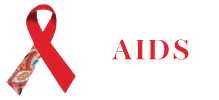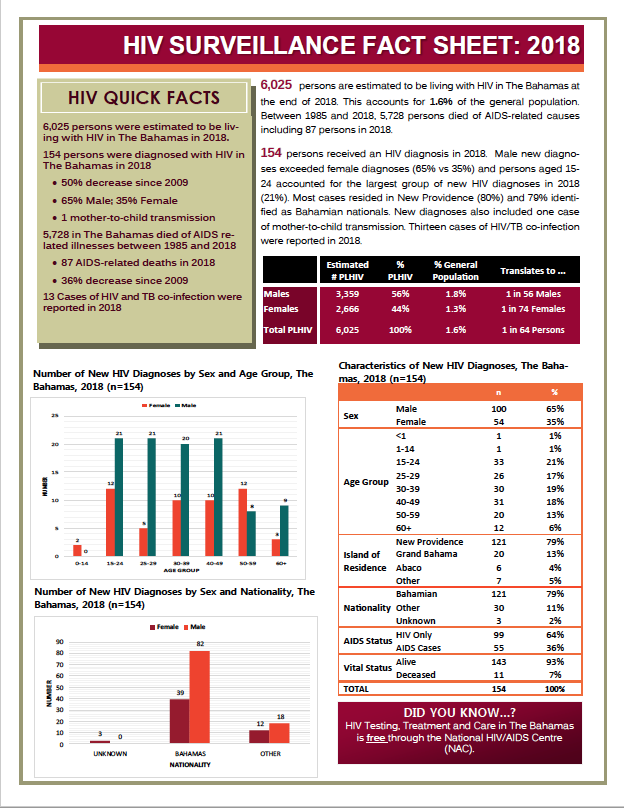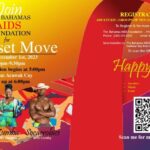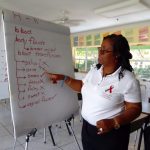Education and awareness are two critical strategies in the fight against HIV/AIDS.
Using the Power of Art to Build Awareness
The Foundation commissioned a Bahamian children’s storybook which we hope to publish and present to Ministry of Education Primary and Junior High Schools for a special reading project (Combating HIV and AIDS through a Culture of Reading) involving all grade six and seven students in the country. In previous years the Foundation also entered into a partnership with Harcourt Educational Books, the Ministries of Health and Education to provide story books in the public primary and secondary schools on crucial issues facing our children, e.g. decision making, HIV/AIDS, stigma and discrimination etc.
Art is an important part of the Foundation’s awareness activities. In the summer of 2019 through the guidance of the Sip & Paint creator our adolescents created “Resilence” a series of paintings which emphasize an upbeat note. Over the years we have created an HIV/AIDS Awareness Junkanoo Quilt. comprised of the artwork of 250 children, some HIV positive and others HIV negative, living in New Providence and on the Family Islands. The goal was to involve children from as many islands as possible in this creative endeavor which mixes art and HIV/AIDS Awareness.
Know Your Status
Another awareness activity was KYS (Know Your Status) a project of the Social Dimensions of HIV and AIDS class at The College of The Bahamas now University of The Bahamas in conjunction with the AIDS Resource Committee, the talented young photographer, Scharad Lightbourne and Utah Taylor-Rolle of ‘Controversy TV’.
KYS was conceived to encourage HIV testing through the use of well-known faces in the community and assist in the reduction of the stigma associated with HIV and AIDS. Nineteen ‘Bahamian celebrities’ graciously agreed to lend their faces and their voices to this important project. These KYS images were displayed on a long wall at a much-used bus stop in downtown Nassau.
KYS is now used as a theme for our 12th Annual Free HIV Testing at the University of The Bahamas. The Free HIV Testing started in 2007 as a project of students in the School of Social Sciences.
Know Your Status is a PAHO/UNICEF Programme aimed at ultimately reducing the spread of HIV by empowering people to know their HIV status and thus being able to make informed decisions about their health care.
“Emerging from the Shadows….A Celebration of Hope”
Another art exhibition entitled “Emerging from the Shadows….A Celebration of Hope” in partnership with well known Bahamian artist, Antonius Roberts resulted in the publication of a book. Mr. Roberts painted twenty-one silhouettes of persons living with HIV and AIDS. The paintings were exhibited along with each person’s individual profiles. The objective was to put a human face on HIV/AIDS without compromising the confidentiality of the individuals portrayed.
Other educational activities over the years include HIV/AIDS educational Youth Rallies, formation of the Human Red Ribbon on World AIDS Day which is in its eleventh year, World AIDS Day Fun Run Walk Rush which is over 20 years old, Public Service Announcements, assisting the National HIV/AIDS Centre with seminars/workshops, funding training of HIV/AIDS health educators, quarterly newsletter, and partnering with PAHO, The Ministry of Education and the Ministry of Health on a Youth Behavioural Survey . A partnership was formed with a branch of Junior Achievers (high school students) who have become active volunteers. The Foundation received a large grant from the United States Department of Defense to conduct HIV and AIDS Research and Education among officers of the Royal Bahamas Defense Force.
The Foundation also provided airfare to indigent HIV positive persons traveling from the Family Islands to the HIV/AIDS Clinic in Nassau.
Other fundraisers over the years include: Dine N Dash, Take Away Lunch, Mid-Summer White Party, Summer Madness, etc. Emerging from the Shadows was a very successful fund raiser and artist Antonius Roberts promised his support for three years
Ongoing Education & Awareness Initiatives
World AIDS Day Human Red Ribbon – Since 2006 the Foundation has brought together hundreds of Primary and Junior High School students to create a Human Red Ribbon. Students wear red shirts and stand in the shape of the red ribbon at iconic venues throughout New Providence. Since 2010 the Foundation has partnered with the Bahamas Red Cross Society to stage this event. Iconic venues include: Rawson Square, Clifford Park, Government House, Goodman’s Bay, Fort Charlotte, Clifton Heritage Site, Thomas A. Robinson Stadium, the Beach Soccer Stadium and Saunders beach. The Ministry of Works Signage Department is another important partner.
World AIDS Day Candlelight Vigil – Since 2015 in partnership with the HIV Centre of the Ministry of Health the Foundation has hosted a Candlelight Vigil on top of the Advanced Guardhouse at Fort Charlotte. The event includes live musical performances, poetry, a balloon release and candle lights in the shape of a ribbon.
HIV/AIDS Awareness at the University of The Bahamas – In 2008 the Foundation in partnership with the HIV Centre of the Ministry of Health commenced Free HIV Testing at the Oakes Field Campus of the University of The Bahamas. In 2015 the Foundation started providing HIV/AIDS education/awareness at the Homecoming Basketball Game. The goal of these events is to provide persons, especially young persons with information about HIV and AIDS. Participants are given goody bags with Condoms, HIV/AIDS information and treats.
Combatting HIV and AIDS through a Culture of Reading – Started in 2010 in partnership with the Ministry of Education, and The HIV Centre of the Ministry of Health. This important programme entails the distribution of HIV/AIDS storybooks to public primary/junior high schools throughout The Commonwealth of The Bahamas
The Objectives are: to engage as many students as possible in an activity that would:
- Provide HIV and AIDS awareness and sensitivity.
- Encourage positive behaviour as it relates to the stigma/discrimination of persons living with HIV /AIDS; and
- Promote literacy.
Each year we target different grade levels. In addition to donating the books we also encourage all the schools to invite a wide diversity of guest readers into their schools to read the book or excerpts from the book to students. The Foundation also hosts a slogan and jingle competition.
Other Activities:
- World AIDS Day Fun Run Walk Cycle that has been organised for the last twenty years
- Bus Stop Bench Advertising – with messages about adherence to medication – coming soon
- PSA’s (Public Service Announcements) on ZNS and Cable 12
- Workshops, e.g. Sensitivity Training for stakeholders,
- Condom Distribution
HIV stands for human immunodeficiency virus. HIV is a retrovirus that infects cells of the human immune system (mainly CD4-positive T-cells and macrophages—key components of the cellular immune system) and destroys or impairs their function. Infection with this virus results in the progressive depletion of the immune system, leading to immunodeficiency.
The immune system is considered deficient when it can no longer fulfil its role of fighting off infection and diseases. People with immunodeficiency are much more vulnerable to a wide range of infections and cancers, most of which are rare among people without immunodeficiency.
AIDS stands for acquired immunodeficiency syndrome and describes the collection of symptoms and infections associated with acquired deficiency of the immune system. Infection with HIV has been established as the underlying cause of AIDS. The level of immunodeficiency or the appearance of certain infections are used as indicators that HIV infection has progressed to AIDS.
Most people infected with HIV do not know that they have become infected. Immediately after the infection, some people have a glandular fever-like illness (with fever, rash, joint pains and enlarged lymph nodes).
Despite the fact that HIV infection often does not cause any symptoms, a person newly infected with HIV is infectious and can transmit the virus to another person. The way to determine whether HIV infection has occurred is by taking an HIV test.
HIV infection causes a gradual depletion and weakening of the immune system. This results in an increased susceptibility of the body to infections and cancers and can lead to the development of AIDS.
The term AIDS applies to the most advanced stages of HIV infection. The majority of people infected with HIV, if not treated, develop signs of AIDS within eight to 10 years.
The length of time can vary widely between individuals. The time between infection with HIV and becoming ill with AIDS can be 10–15 years, sometimes longer, but sometimes shorter. Antiretroviral therapy can prevent progression to AIDS by decreasing viral load in an infected body.
HIV can be found in body fluids, such as blood, semen, vaginal fluids and breast milk.
HIV is transmitted through penetrative (anal or vaginal) sex, blood transfusion, the sharing of contaminated needles in health-care settings and drug injection and between mother and infant during pregnancy, childbirth and breastfeeding.
Oral sex is regarded as a low-risk sexual activity in terms of HIV transmission.
There is no cure for HIV. However, there is effective treatment, which, if started promptly and taken regularly, results in a quality and length of life for someone living with HIV that is similar to that expected in the absence of infection.
Antiretroviral medicines are used in the treatment of HIV infection. They work against HIV infection by blocking the reproduction of HIV in the body.
Knowing your HIV status has two vital benefits. Firstly, if you are HIV-infected, you can start treatment promptly, thereby potentially prolonging your life for many years. Secondly, if you know you are infected, you can take all the necessary precautions to prevent the spread of HIV to others. If you are not infected with HIV, you can learn how to protect yourself from HIV in the future.
There are many places where you can be tested for HIV: in the offices of a private doctor, the National HIV/AIDS Centre of the Ministry of Health, Royal Victoria Gardens (242-323-5968), your local health clinic, and hospitals.
HIV is not spread by mosquitoes or other biting insects. Even if the virus enters a mosquito or another sucking or biting insect, it cannot reproduce in the insect. Since the insect cannot be infected with HIV, it cannot transmit HIV to the next human it feeds on or bites.
HIV is not transmitted by day-to-day contact in social settings, schools or the workplace. You cannot be infected by shaking someone’s hand, by hugging someone, by using the same toilet or drinking from the same glass as someone living with HIV or by being exposed to coughing or sneezing by an infected person.
You cannot tell if someone has HIV by just looking at them. A person infected with HIV may look healthy and feel good, but they can still pass the virus to you. An HIV test is the only way a person can find out if he or she is infected with HIV.
Adapted from www.unaids.org
For More Information: www.unaids.org






